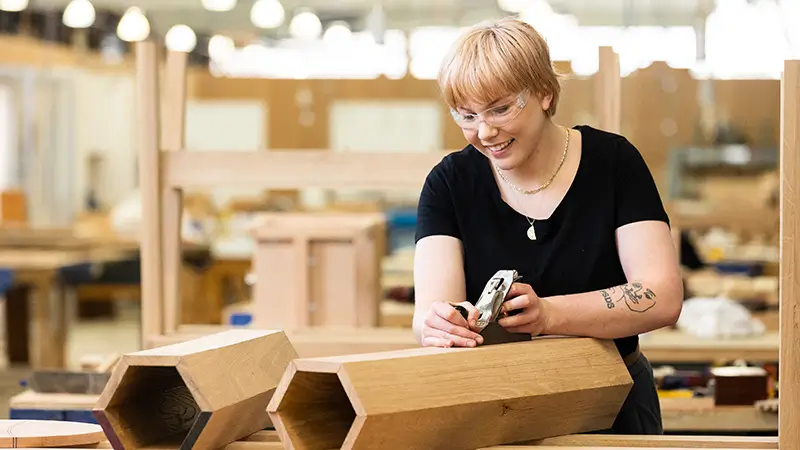
Exploring Victoria Woodworking | Techniques, Tools, and Tips for Beginners
- Ventscripe Staff
- July 21, 2025
- Lifestyle
- Victoria Woodworking
- 0 Comments
Victoria Woodworking is much more than just a hobby. It’s a journey of creativity that allows you to discover the possibilities of transforming basic material into useful art. If you’re planning to construct the first birdhouse of your own, design customized furniture, or explore your creative side, this traditional craft offers endless possibilities of creativity and expression.
When you begin this journey, you’ll be exposed to various techniques and tools to assist you in improving your capabilities. The practice of woodworking allows you to create unique pieces but also helps develop the ability to work with precision and patience, which is a satisfying experience in itself. Let’s look into the basics that everyone who is new to woodworking should be aware of, Victoria woodworking, so that you are able to unleash your crafty side confidently!
Essential Tools for Beginners
Beginning your journey into Victoria woodworking will require the appropriate tools. The right tools could make a huge difference in the results of your tasks.
A high-quality hand saw is essential for cutting precise lines. Choose a crosscut that works for newbies. Alongside that, a strong tape measure will give you exact measurements every time.
Do not forget Chisels! A set of basic chisels can assist you in shaping edges and making intricate designs. Combine them with a reliable mallet to provide you with greater control when using them.
Clamps are a different tool that is essential. They secure pieces during the time that the glue sets or while cutting joints.
Make sure you have safety gear, such as goggles and ear protectors, to ensure your safety while enjoying this thrilling pastime. These essential tools will help you prepare for the many imaginative projects to come.
Basic Techniques
Basic woodworking techniques are the basis of any project that is a successful project. No matter if you’re building shelves for your home or creating an elaborate piece of furniture, knowing these techniques is vital.
Begin by taking measurements and marking your marks precisely. Accuracy in measurements can help you save time and resources later. Use a ruler to ensure that your lines are straight. And always double-check measurements prior to cutting.
Learn to cut wood properly. A well-cut cut is crucial to putting pieces together smoothly. Practice different sawing methods–crosscutting and ripping–to understand when each technique is appropriate.
Making holes with precision will make assembly much simpler. Make sure you have a set of drill bits that are suitable for various jobs, including pilot holes and bigger openings for hardware.
Sanding can be tedious, but it’s essential to get smooth surfaces. Try experimenting with different grits, beginning more coarse and then advancing to higher-quality ones as you refine the surface of your workpiece.
Choosing the Right Wood for Your Project
Selecting the correct wood could dramatically affect the final result of your project. Every kind of wood has distinct features, impacting both the aesthetics as well as the functionality.
Hardwoods like maple and oak are extremely durable, making them the perfect furniture material that can withstand the rigours of daily use. They are beautiful with their patterns of grain and vibrant shades, but they may need more energy to use because of their density.
Softwoods like pine and cedar are less heavy and easy to work with. They are great for those who are just starting out, testing various techniques and projects. They also tend to be cheaper and allow you to try new things without breaking the bank.
Think about the finish you’d like as well. Certain woods are more resistant to staining than others, which enhances their natural beauty while offering protection. Take into consideration where your finished piece will reside; certain woods are more durable in humid conditions than others.
Making the right choice sets the stage for a productive woodworking adventure.
Tips for Successful Woodworking
A successful woodworking experience begins with a tidy workspace. Make sure your tools are easily accessible and that everything is well organised. An uncluttered space improves focus and creativity.
Make sure you plan your projects carefully. Draw out ideas and make cut lists so that you don’t make mistakes later. Making time in the beginning will save you frustration later on.
Cut twice and measure once – this adage is true for beginners as well as experts. Achieving accurate measurements will result in more fitting pieces and make assembly easier.
Don’t rush your work. Patience is essential when working with wood. Make sure that the glue is completely dry before proceeding, making sure you have the integrity of your work.
Embrace experimentation. The mistakes you make can lead to new designs or techniques that you didn’t think of before. Each project can be a learning opportunity to grow as an artist!
Advanced Techniques to Take Your Skills to the Next Level
Once you have gained confidence as you gain confidence in Victoria woodworking, think about diving into techniques that are more advanced and can elevate your work. One of those techniques is joinery, where precise cuts can create strong bonds between the pieces. Learning to master dovetails and mortise-and-tenon joints will significantly increase the longevity of your work.
Another option to consider is the wood bend. This technique opens up new avenues to be creative, allowing you to create unique curves and shapes. The use of heat or steam enable this method to be accessible for those who are just beginning to expand their horizons.
The finishing techniques are also worthy of consideration. Explore the possibilities of staining, paints and sealants to create stunning surfaces that show off the beauty of wood while also protecting it from deterioration.
Consider incorporating technologies into the workflow using the use of lasers and CNC equipment. They offer unbeatable precision and can transform complex designs into a reality, extending the possibilities you imagined possible when you started your woodworking journey.
Conclusion
The ability to unleash your imagination by using Victoria woodworking can open up an endless array of possibilities. If you’re making simple pieces of furniture or tackling more challenging furniture projects, the skills you learn will bring your ideas to reality.
Begin to embrace the journey. As you improve your techniques and become familiar with the most important tools, each step will enhance your knowledge of this rewarding art. Be open to experimentation and don’t be afraid to make mistakes in the process, as they often lead to fascinating discoveries.
Connecting with other woodworkers can give inspiration and help. Local workshops, online forums or groups for community members can be great sources for gaining knowledge and sharing your experiences.
With a little patience and perseverance, with time and practice, woodworking can not only improve your abilities but also acts as an outlet for creativity that can bring happiness and satisfaction. Please get involved in Victoria’s woodworking now and see how it changes your environment and mental outlook!
More to Checkout: Wattios




